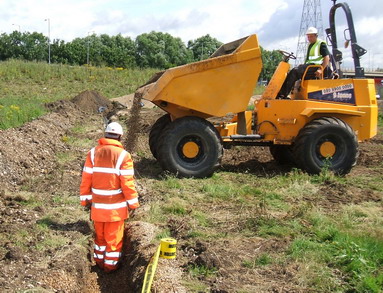Physical

Physical methods of remediation generally involve the removal of contaminants from the soil, water and gaseous medium by utilising their different physical properties.
Both organic and inorganic contaminants are separated using a number of mechanical techniques.
Contaminants are not destroyed but are isolated for separate removal or destruction, which may be biological, chemical or thermal.
Some of the specialist technologies used for physical remediation include:
- Soil vapour extraction: a vacuum is applied to soil to induce a controlled flow of air and removal of volatile and some semi volatile contaminants.
- Dual/multi-phase vapour extraction: a high vacuum system removes various combinations of contaminated groundwater, free phase product and vapour from the subsurface.
- Air stripping: volatile organic compounds are partitioned from groundwater by greatly increasing the surface area of the contaminated water exposed to air.
- Air sparge: air is injected into saturated soil to flush contaminants into the dry zone for removal by vapour extraction.
- Pump and Treat: pollutants are removed from air and contaminated groundwater using activated carbon or zeolites.
- Soil processing and washing: contaminated soil is scrubbed with water and the wash solution is concentrated by gravity separation into a smaller mass of highly contaminated sludge.
- Asbestos removal from soil: visible fragments of asbestos containing material are picked by hand from the soil mass.
- Free product removal: LNAPL is removed from the water surface and DNAPL is removed from the bottom of the water body.
- Engineered containment: permeable reactive and static barriers.
- Landfill engineering including leachate & gas control.
